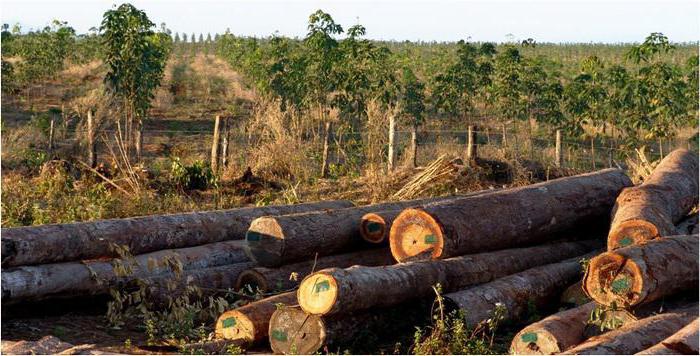With the transition to market relations, the nature of interactions in society has significantly changed. Today, the basis for socio-economic development is not so much the possession of familiar material resources as the possession of information and the skills of its analysis. Under the new system, there is a constant change in market infrastructure. However, traditional economic resources are still the subject of scientific analysis.
Urgency of the problem
As mentioned above, market relations are in constant motion. As a result, significant changes are taking place in key elements of the system. In particular, the transformation to which labor economic resources, capital, and land undergo a great influence on the behavior of states and private companies in the markets. All this, in turn, requires careful analysis.
Economic Development Resources: General Description
Factors in the creation of benefits are united in science in a special category. The economic resources of production act as means actually involved in the technological process. They are presented in the form of spiritual, social and other forces that can be used to create services, products and other values. The main factors are:
- Capital.
- Land.
- Work.
- Information.
- Entrepreneurship.
Classification
In its composition, economic resources are very diverse. It is customary to subdivide them into 4 large groups:
- Material (capital). They include everything that is created by human hands.
- Natural and economic resources. They are natural objects that are in the environment (gas, oil, coal and so on), land, water wealth, air basin. They are classified as renewable and non-renewable.
- Financial economic resources. They are presented as a combination of cash and assets of all kinds that are at the disposal of the company and can be used to create benefits. These factors are the result of the interaction of costs and profits, the distribution of revenues, their accumulation and subsequent use.
- Labor resources. They represent a part of the population that has the mental and physical abilities to carry out work activities. These economic resources are usually evaluated on three grounds:
- cultural and educational;
- vocational qualification;
- socio-demographic.

Capital
This concept combines all the funds included in the process of manufacturing services or goods. In addition, the concept of capital includes material objects. These include, in particular:
- Equipment.
- Premises, structures and buildings.
- Cars and other assets.
These factors are the result of past human activities with the aim of their subsequent use for the release of new benefits.
Workers Activities
Of particular importance in economic activity are the socio-economic resources - human capital. In the system of factors, this category characterizes the useful activity of people aimed at creating new benefits. In some cases, labor resources are a specific group of society that is directly involved in social production. To reflect its essence, the definition of "nature of activity" is used. It reflects the features and the relationship of individual and social labor in various socio-economic formations. It is customary to classify work as physical and mental. 
Entrepreneurship
This category can combine all the economic resources mentioned above. Entrepreneurship is understood as the ability to take risks and launch new technologies and ideas into the company's activities. The specific functions of this institution are observed in the presence of special skills, talent to manage the organization of the process, assets, innovations, risks, strategy, as well as the ability to quickly navigate the market conditions. This separation of entrepreneurship acts as a tribute to the traditions developed in the West. The formation of profitable production of the goods demanded by society should be recognized as the main social function of this institution.
Information
It is a complex of data and information that is transmitted from one person to another in various forms (verbally, in writing, and so on). At the beginning of the 21st century, business information is considered as one of the key elements in the aggregate of economic resources. This category implies a systematic system of knowledge and data about the object involved in economic activity. The value of business information is constantly growing. This is due to the fact that it ensures the transfer of innovative technologies. The informatization itself in various areas of social interaction determines the positive dynamics for the relevant economic sectors, forms the basis for integration and globalization in modern market relations. 
Factors and economic resources of production: a comparative characteristic
These two categories have a number of common features. In particular, the factors and economic resources of the enterprise act as the same forces through which the creation of benefits is carried out. However, there is one significant difference. So, resources are social and natural forces that can be attracted to production. Factors are means that are really involved in the process. This suggests that the concept of "economic resources" is broader than the term "factors".
Limited funds
World production is expanding annually. At the same time, demand for products does not decrease, but, on the contrary, only increases. The production of new goods requires more materials and resources. However, the reserves of the latter are severely limited both qualitatively and quantitatively. The economic resources that are at the disposal of all people, individual countries or enterprises are obviously not enough to satisfy all the needs of society. This limitation forces us to make choices and make decisions - which products and services to produce and which not. The implementation of this task is complicated by the fact that, preferring one type of goods, a person refuses others.
The issue of rational distribution of resources is not only a challenge for every individual, but also for companies and governments. The combination of two situations typical of economic life - limited stocks and unlimited needs - forms the basis of the market system in practical and theoretical aspects. At its core, economics acts as a science, within the framework of which it is studied how a society with scarce resources decides for whom, how and what to produce. However, modern theory cannot be reduced only to this question. Nevertheless, the contradiction that exists between the limitlessness of requests and limited funds forms the axis around which all economic life moves.
Interaction principle
All economic resources of the enterprise, country, world are closely intertwined with each other. For example, knowledge is used in cases where there is a question about the rational distribution of natural reserves. They also act as an essential element of the workforce.This is manifested in cases where the work is evaluated in terms of quality, paying attention to the qualifications of the staff, which, in turn, depends, first of all, on the education received. Knowledge, mainly of a technological orientation, ensures the rational operation of equipment - real capital. Management skills, in turn, contribute to the competent organization of the process of creating benefits.
Mobility
Economic resources are highly mobile. They can move in space - between states or within a country. Along with this, it is worth noting that the level of their mobility varies. Natural resources are considered the least mobile. For example, land is problematic to move from one place to another. More mobile are the workforce. This is evident from the external and internal migration of labor. High mobility is characterized by entrepreneurial abilities. In practice, most often they do not move independently, but in conjunction with labor or capital.
Alternative
The above properties of economic resources in aggregate partially reflect another characteristic - interchangeability. For example, a farmer needs to increase grain output. He can implement this task in several ways:
- To expand the area under crops, using additional natural resources.
- Hire people to help by increasing the use of labor.
- Improve organization of activities on the farm using entrepreneurial skills.
- To expand the inventory of equipment and machinery, increasing equity.
- Use the seeds of new varieties, applying knowledge.

This choice is due precisely to the interchangeability of economic resources. As a rule, alternative is not absolute. For example, labor resources are not able to completely replace capital. Interchangeability is usually effective at the very beginning. Subsequently, this process is becoming increasingly complicated. For example, with a constant number of tractors, you can hire additional workers by setting a schedule in two shifts. But to attract more people to cultivate arable land in three shifts will already be very problematic.








